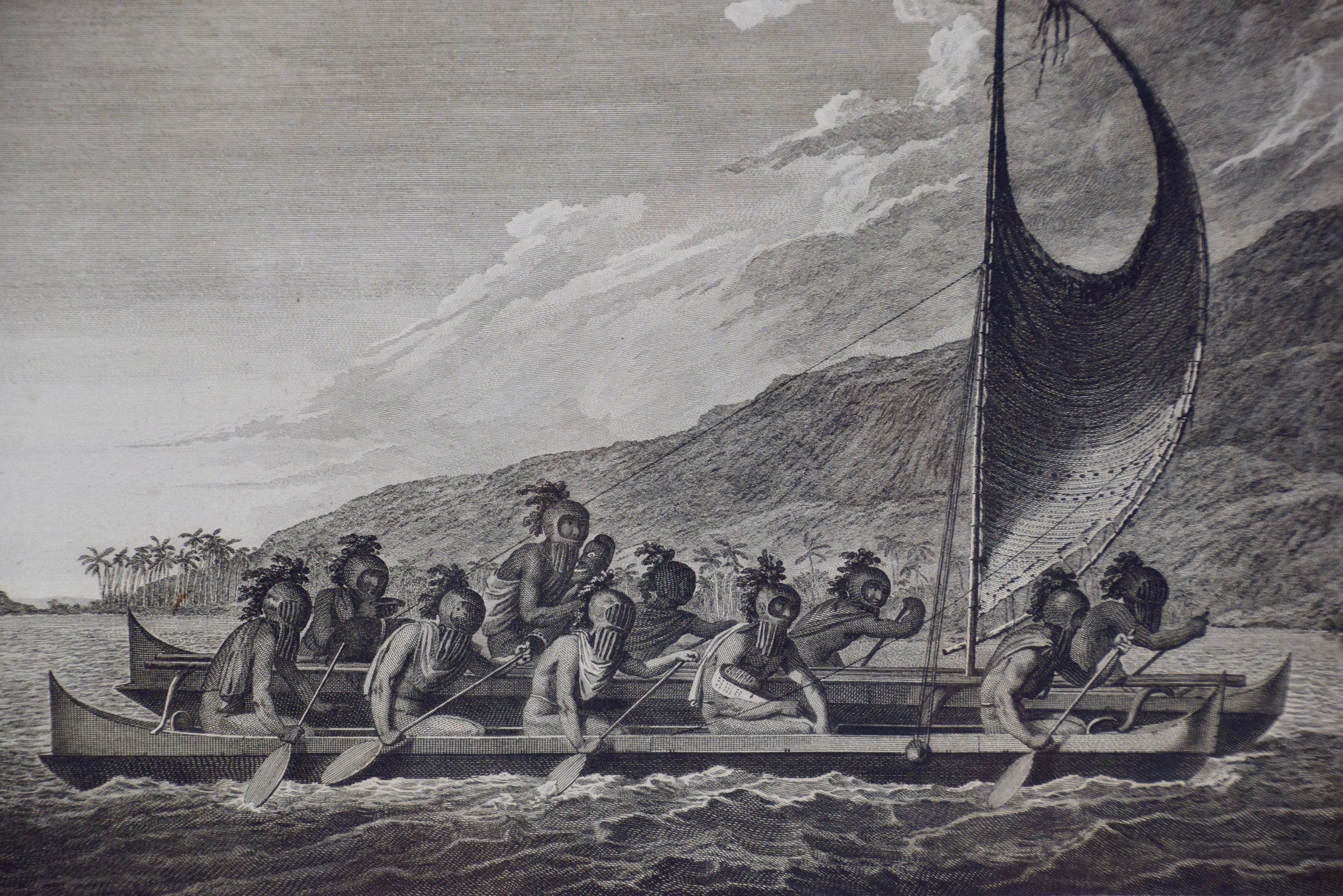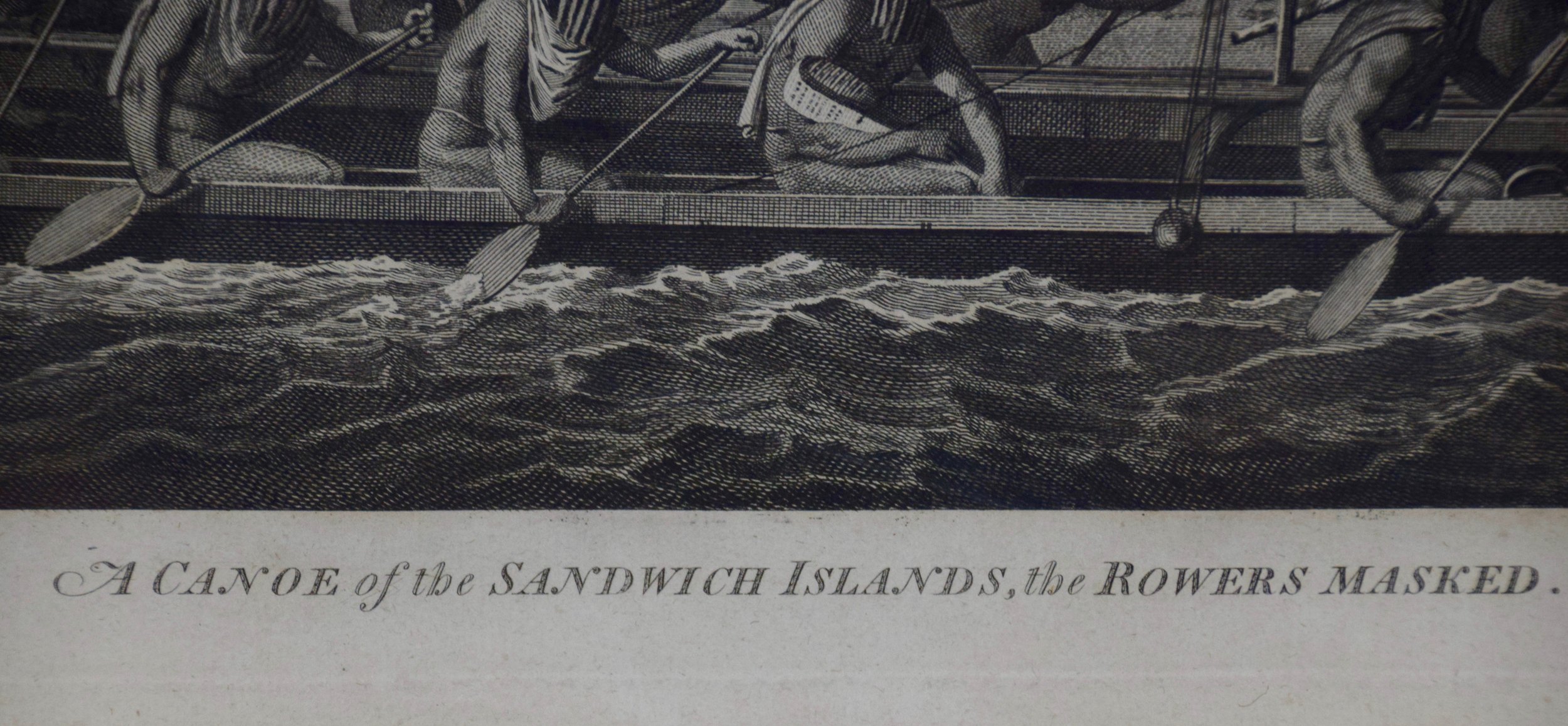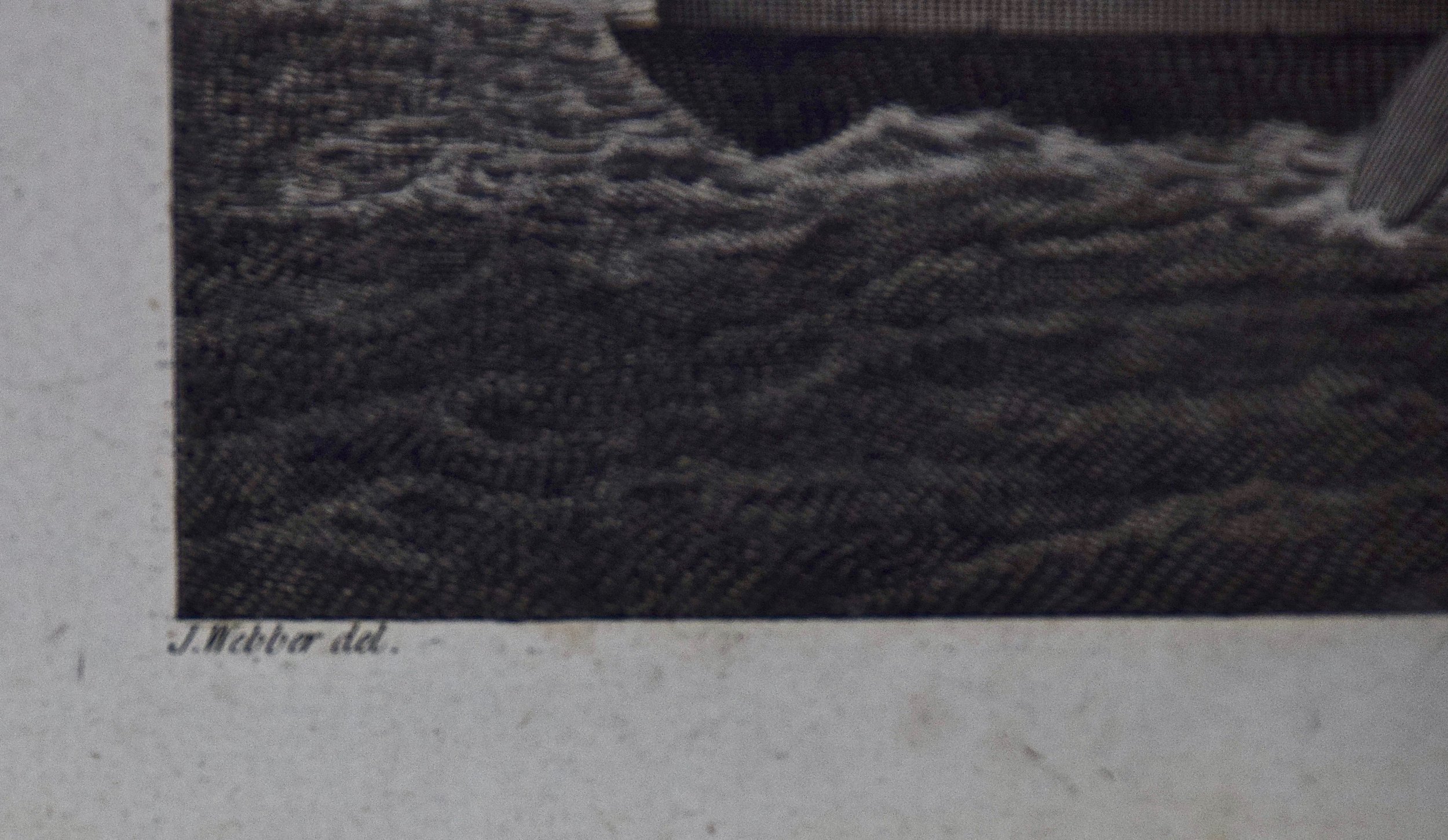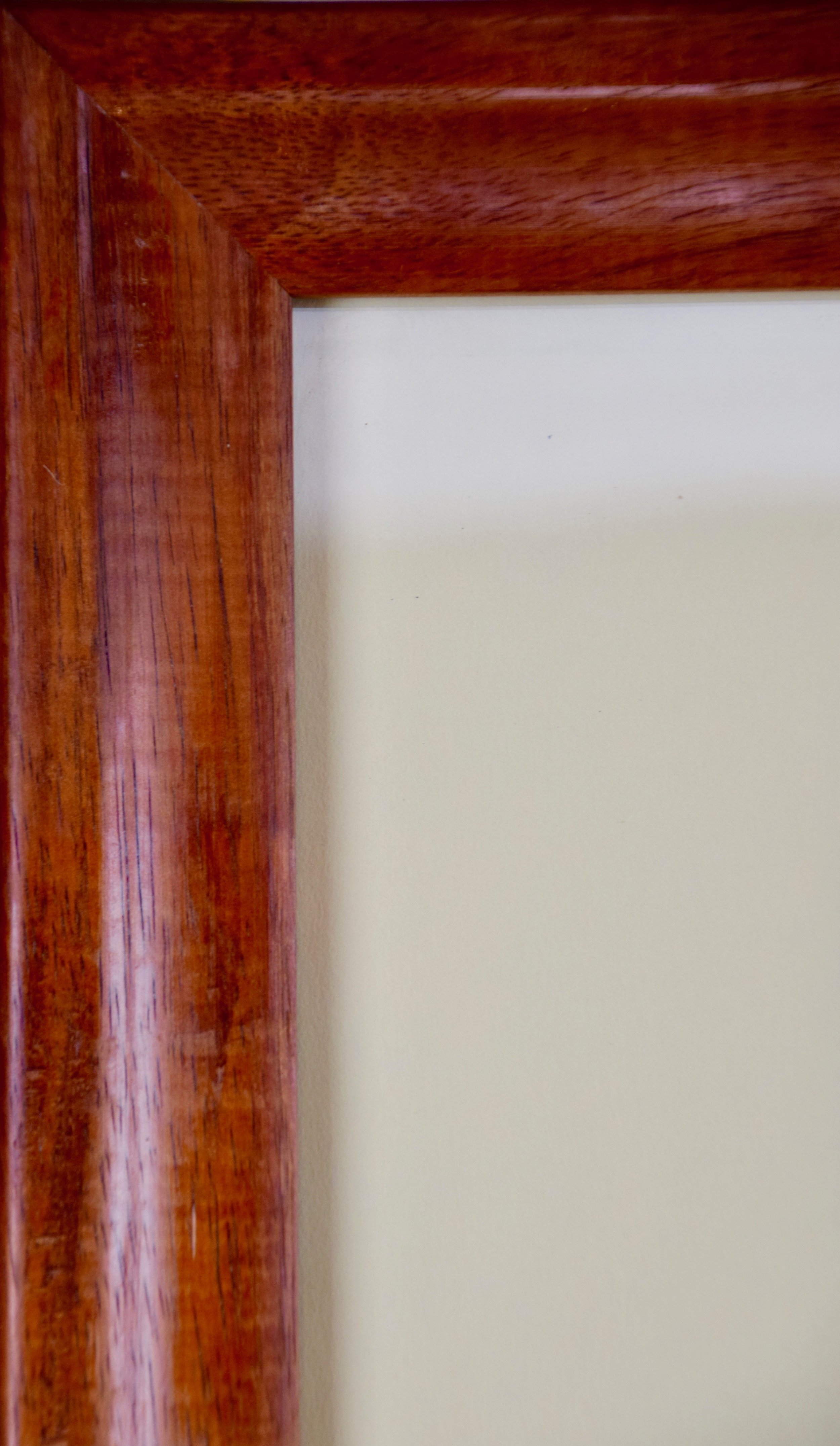This engraving depicts an outdoor ceremony in Tonga to honor the visit by Captain Cook from May 1st to 14th, 1777. A dance performance by 15 men is taking place to welcome Cook and his men to Hapaee, an island in Tonga, which Cook called the Friendly Islands because of his unusually warm welcome. The dance on this island was usually performed in a remote location and lit with torchlight. The me’elaufola, as it was called, was thought to harness sacred powers from Pulotu, the afterworld. The rhythm of the dancers’ feet, extended arm movements, and thuds of bamboo canes escalated to a frenzied crescendo of noise, prompting ecstatic revelations and visions of the spiritual world. In Webber’s engraving the dancers’ bodies are lit from below, shrouding the scene with an atmosphere of anticipation and mysticism. Captain Cook is shown is shown in the foreground from behind him as he and some of his officers watch the dance. Captain Cook described the event in his words in his journal: ”Each of them with an instrument shaped somewhat like a paddle, 2 1/2 feet in length, with a small handle, and a thin blade so that they were very light. With these instruments they made many and various flourishes, each of which was accompanied with a different attitude of the body or a different movement. The musical instruments consisted of 2 drums, or rather two hollow logs of wood, from which some varied notes were produced, by beating on them with two sticks. It did not appear that the dancers were much assisted or directed by these sounds, but by a chorus of vocal music, in which all the performers joined at the same time. Their song was not destitute of pleasing melody; and all their corresponding motions were executed with so much skill, that the numerous body of dancers seemed to act, as if they were one great machine.” The artist has captured the beautiful lighting illuminating the dancers while the backs of the audience in the foreground are a dark contrast. Captain Cook is reportedly seated in the foreground between a Tongan man and one of his officers. Another British officer stands on the right speaking with a Tongan man. There is a lush landscape in the background, including palm trees. The ceremony was witnessed by John Webber, the artist who accompanied Cook on his 3rd voyage of discovery. He made the drawing that was used for this 18th century engraving.
The engraving is printed on laid chain-linked paper. The sheet was created slightly wedge-shaped, measuring 9.63" in height on the left and 9.25" on the right. The sheet measures 15.25" in width. There are a few faint spots and smudges in the margins and minimal blunting of three corners. Most of these issues would be obscured by a frame mat. The image is in excellent condition; beautifully inked.
"A Night Dance by Men in Hapaee" would make a striking display grouping if paired with "A Night Dance by Women in Hapaee", which is also available on this site.
Alexander Hogg was an 18th and early 19th century publisher of illustrated books of architectural and historical prints, as well as maps. His publishing house was located in London at the Kings Arms on Paternoster Row.































